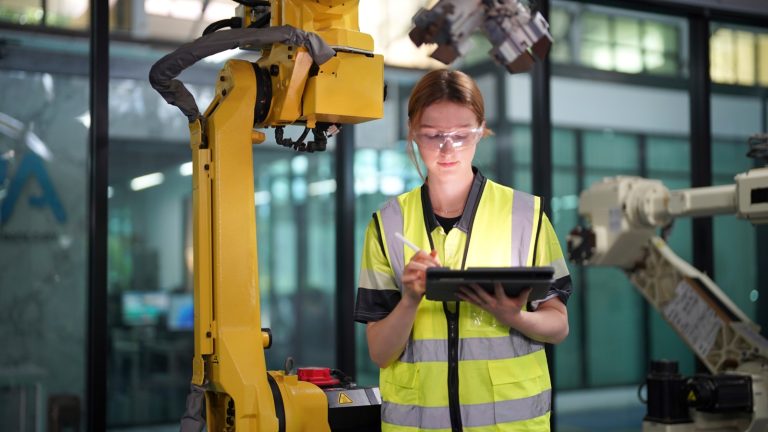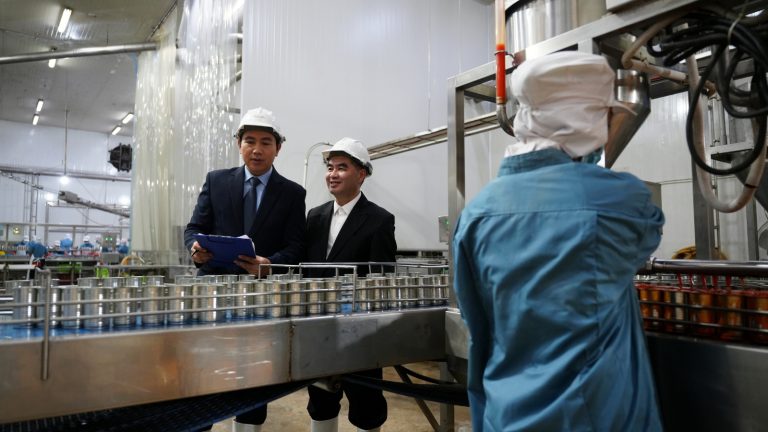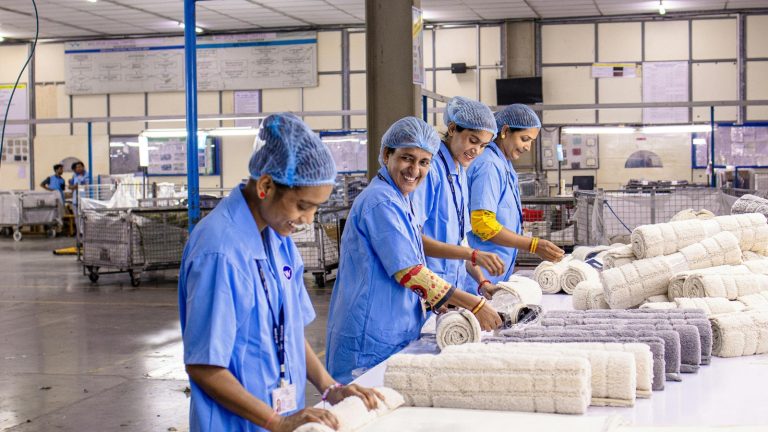Manufacturing is one whole chaotic flow of complex machines, production processes, unstoppable downtime, supply chain disruptions, etc. It is nearly impossible to make all the materials, machines, and workforce blend in order to receive the optimal outcome if you do not have the focal control. This is where the ‘Manufacturing Operations Management’ or MOM comes in as the best solution.
In this article, we cover everything about what exactly MOM is, why manufacturers need such a central management and what steps they need to follow for a successful MOM implementation.
We will discover
- What is Manufacturing Operations Management?
- The Key Components of Manufacturing Operations Management
- Essential Steps for Implementing Manufacturing Operations Management
- Cerexio MES for Overall Manufacturing Management
- Making Your Productions Perfect with Manufacturing Operations Management Process
- FAQ about Manufacturing Operation Management
What is Manufacturing Operations Management?

- MOM represents the process of taking the predominant management of every aspect that comes under manufacturing, from planning, controlling, to improving all activities on the factory floor under a singular focal point.
- This sits in the middle of the manufacturing operational layer, and it brings production, machines, workers, quality, and materials into balance to achieve one production goal.
- In a fast-moving manufacturing world, MOM comes into play as the best strategy to run factories efficiently, make better products, reduce waste, and achieve expected quality levels at the end
The Key Components of Manufacturing Operations Management

Production Planning and Scheduling
MOM helps manufacturers decide what products to make, when to initiate them and in what quantities. Since it has the scheduling capacity, it can organise production work, which harmonises the contribution of machines and workers effectively.
Inventory Management
As MOM comes with inventory management capabilities, it supports tracking raw materials and work-in-progress in order to release the finished goods. As a main part of this, MOM ensures the production runs with enough materials. In one way, it sort of prevents shortages or extra waste; in another way, the latter helps production run smoothly.
Quality Management
MOM’s best feature lies in its ability to offer quality inspections for the production line. It keeps checking whether the products align with the required standards. Starting from quality testing, it conducts some random inspections to find defects early. MOM provides the best strategy to stay away from mistakes, recalls, and reduce the material waste unnecessarily.
Process Control and Monitoring
MOM is powerful enough to keep an eye on how production machines and systems work. It comes with embedded sensors and monitors to check performance in real-time. This system not only aids in keeping the production steady, but also prevents errors, and brings the efficiency levels in the factory to the top.
Workforce Management
One important aspect the MOM system takes care of is workforce management, and it simply brings some unification to workers, their schedules, and their skills and organises them to receive the best outcome. For example, one ability of the latter is to make sure that the factory has enough staff for each task, and they have acquired the necessary skills to fulfil their duties..
Maintenance Management
In this aspect, MOM look after the machine repairs and checkups on a regular basis. As it has integrated Preventive Maintenance capabilities, the system has the potential to stop breakdowns before they happen. This offers proper maintenance for the factories to save time and avoid costly repairs.
Supply Chain Integration
The latter simply harmonises suppliers, factories, and distributors to ensure the constant process of receiving raw materials on time and customers receiving finished goods at the end point. This helps the factories to keep their production on schedule and reduce delays.
Compliance and Safety Management
As one important part, MOM paves the way for the manufacturers to adhere to the government and industry regulations and stay away from unwanted penalties. If factories do not align with rules and regulations, it immediately interferes and offers suggestions to get it back on track. Ultimately, MOM acts as the main pillar of strength to make the manufacturing plant a safer place for workers and the environment.
Essential Steps for Implementing Manufacturing Operations Management

Assess Current Processes
The fundamental step you need to take before implementing MOM is to evaluate how everything in the manufacturing plant is done at the current moment. You can start this mechanism by checking your production, inventory, and quality processes. That way, you will be able to identify some problems. You will spot slow areas and current mistakes you are committing.
The primary reason it is important to understand current work is that it offers an overall perspective of what needs to be changed and improved in order to gain better results.
Define Goals and Requirements
Without clear goals, it is impossible for MOM to achieve its potential outcome. The first step is to decide what you expect to achieve. These may be objectives such as faster production, less waste, or better quality.
Whatever your expectation is, you must gain a better understanding of the tools, technology, and processes needed in this long process. Then, map out important measurements and targets, which help you in tracking success. This way, you can guarantee that MOM works as expected.
Select and Integrate Technology
If you fail to opt for the right MOM software and tools for your factory, you will not see the anticipated end result. This is why in the next stage, the manufacturers must check whether the MOM software they purchase actually works with the existing systems, like ERP or MES, which are currently in place.
In order to make it one interconnected system, you can connect machines, production data, and staff information and let the integration flow. This lays the basis for smooth data management, and it keeps everyone in sync with all the processes.
Train Staff and Establish Procedures
If you do not maintain up-to-date operational proficiency among personnel on the latest technological advancements, they will encounter challenges in utilising those new systems and executing newly defined procedural guidelines. This is why it is a wise strategy to offer clear instructions and maintain standard procedures to establish uniformity within the factory. No matter what task they complete, all of them do it the same way.
With proper training and standardised procedures, your workers will clearly understand their roles. The latter enhances error-proofing mechanisms during production, and it operates as an exemplary procedural approach to keep work safe and efficient.
Monitor, Analyse, and Improve
Even after MOM is implemented, the responsibility never ends. Manufacturers must keep watching performance and collect data to look into various aspects of the change management process. MOM comes with several reporting options and dashboards to offer insights to indicate irregularities, required improvements, etc.
You can make changes based on results to improve efficiency, reduce waste, and ensure the factory keeps meeting goals over time.
Cerexio MES for Overall Manufacturing Management

Even though MOM is a broad implementation process, Cerexio MES can take up a core part as it comes with Industry 4.0 capabilities for the manufacturing industry. Our software platform helps your MOM integrations, offering real-time monitoring, OEE, quality inspections, traceability and scheduling features. With a wide array of characteristics, Cerexio MES acts as the operational core of MOM implementation.
Making Your Productions Perfect with Manufacturing Operations Management Process

If you see the loopholes in your production landscape, why waste your money and time without making the best decision today? Manufacturing Operations Management or MOM implementation is the process that can drive your growth faster and more precisely, offering perfection in every bit of the production floors.
FAQ about Manufacturing Operation Management
As the best advantages of implementing MOM, the manufacturing facilities can improve efficiency, gain cost reductions, and achieve optimal product quality while avoiding downtime. MOM provides real-time visibility, which eventually enhances decision-making for manufacturers and paves the way for regulatory compliance.
MOM acts as a versatile tool for the quality engineers, factory managers, maintenance workers, the workforce on the operational floors, and production planners to monitor, control, and augment manufacturing system performance metrics with heightened precision.
Yes, even though large-scale manufacturers tend to implement MOM, it is highly flexible to serve small or medium-sized factories as well. Since cloud-based MOM solutions do not require heavy IT infrastructure, it is an affordable choice for small manufacturers, too.
